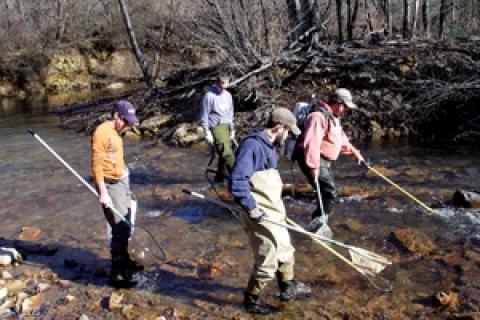
Like it or not, winter provides inevitable downtimes in outdoor pursuits, periods when factors such as unreasonable weather or closed seasons eliminate any options. One of my favorite indoor activities during these times is planning fishing trips for the coming year.
 Among the many tools for planning such trips, fishery surveys posted on state resource agencies' websites has to rate high. These inventories, conducted periodically to assess the status of a lake, river or stream's fish population, can help an angler determine what waters should be hot, and which ones maybe not.
Among the many tools for planning such trips, fishery surveys posted on state resource agencies' websites has to rate high. These inventories, conducted periodically to assess the status of a lake, river or stream's fish population, can help an angler determine what waters should be hot, and which ones maybe not.
As useful as the information posted from such surveys is, often it's not provided in laymen's terms. To glean the most from them it's best to understand some basic terms.
Young-of-Year is often expressed as y-o-y. Young of year surveys are typically conducted during the fall of the year, with the objective of determining the success of the previous spring's spawn. Naturally, this timing applies to fish that are spring spawners. The strength of the hatch can say a lot about how good the fishing will be a few years down the road. For instance, Lake Erie walleyes experienced a tremendous hatch in 2003. By 2006 these fish were of legal size. The 2003 spawn is still supplying a significant number of Erie's 'eyes.
Fisheries personnel use a variety of methods for collecting fish. Two of the most common are electro-fishing and the use of trap nets.
In electro-fishing, current produced by a portable generator is conducted through probes that momentarily shock fish, after which they are netted for processing. Electro-fishing is only effective in the shallows. It's often conducted during a species' spawning time, when they are normally in shallow water.
Trap nets are similar to a super-sized minnow trap. Once deployed in an area where fish managers expect the targeted species to gather, trap nets are checked periodically for their contents. The rate in which fish are collected — such as catch rate per hour of electrofishing — can be indicative of that species density.
Oftentimes data from past surveys is also available. When considering the results of various surveys be sure you are looking at catch rates measured via the same unit of effort, as well as the same method of collection, so you're comparing apples to apples. This information can indicate whether fish populations are increasing or decreasing.
Size breakdown is another significant item. Take for instance largemouth bass. A survey will provide a total of adult bass collected. Often, though, it will also tabulate the numbers of bass over 12 inches, as well as those over 15 inches. Thus you can get a feel for how much of that lake's largemouth population falls in the "quality size" range, those fish that we as anglers like to catch.
Fisheries managers must deal with outside variables — like unfavorable weather patterns — the same as you and me. These factors can influence survey results. Still, reviewing this data is a fascinating activity, one that can lead you to better fishing.
- 2170 views

